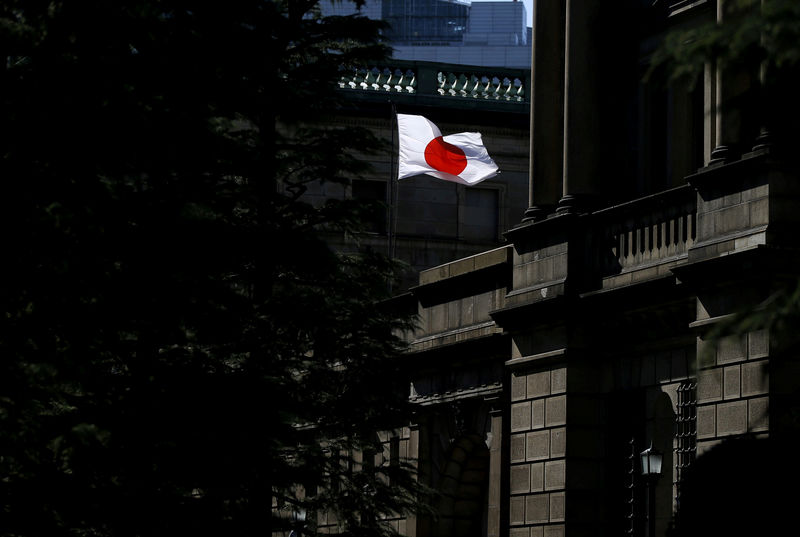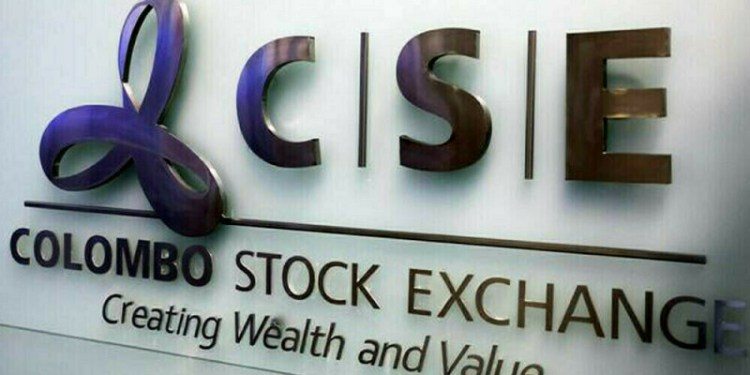 © Reuters. FILE PHOTO: A Japanese flag flutters on the Bank of Japan building in Tokyo
© Reuters. FILE PHOTO: A Japanese flag flutters on the Bank of Japan building in TokyoBy Leika Kihara
TOKYO (Reuters) – As the risks to the global economy rises, the Bank of Japan is expected to join a chorus of warnings from other policy-makers of the threat to growth from protectionism and signal its resolve to keep the money spigot open.
At this week’s policy review, the BOJ is seen maintaining its ultra-easy monetary settings even as years of heavy bond buying dries up market liquidity and hurts bank profits, leaving it well behind its U.S. and European counterparts in dialing back crisis-mode stimulus.
Adding to the plight of narrowing margins for financial institutions, the 10-year yield hit a five-month low of 0.025 percent on Monday as investors flocked to the safety of Japanese government bonds.
Some analysts say 10-year yields may fall below zero, a move that would undermine the BOJ’s efforts to steepen the yield curve and give financial institutions some breathing space.
The central bank will tolerate negative long-term rates, as long as the 10-year yield moves within the range of around minus 0.2 to plus 0.2 percent set in July, say sources familiar with the central bank’s thinking.
“The BOJ decided to allow yields to move more flexibly, which applies to both rises and falls,” one of the sources said.
At the two-day rate review ending on Thursday, the BOJ is widely expected to keep its short-term rate target at minus 0.1 percent and the 10-year yield target around zero percent.
While the nine-member board is set to maintain its view Japan’s economy will continue expanding moderately, it may warn of heightening global risks including from the Sino-U.S. trade war, slowing demand in China and volatile financial markets.
“With interest rates falling across the globe, it would make sense for the BOJ to tolerate declines in long-term rates,” said Mari Iwashita, chief market economist at Daiwa Securities.
“The focus would be on whether the BOJ will acknowledge some weakness in global growth.”
Fears over the potential fallout from the Sino-U.S. trade war prompted the International Monetary Fund to cut its global economic growth forecasts in October. Growing external headwinds also drove markets to scale back expectations of steady U.S. interest rate hikes.
INFLATION PICTURE DARKENING
Japan’s economy shrank in the third quarter but analysts expect growth to have rebounded by year-end, as solid domestic consumption softens the blow from trade frictions and slowing global demand.
Companies appear unfazed by the trade tensions for now, with the BOJ’s quarterly “tankan” survey for December showing big firms are sticking to their upbeat capital expenditure plans.
But some in the central bank worry the trade woes may discourage firms from ramping up spending in the next fiscal year beginning in April 2019, the sources say.
Heightening risks could further delay achievement of the BOJ’s 2 percent inflation target, with annual core consumer inflation still at 1.0 percent in October.
Some analysts warn that consumer prices may fall next year due to recent oil price declines as well as planned cuts in mobile phone charges and education fees.
The BOJ will look through the effect of such one-off factors and will not ramp up stimulus unless price falls are accompanied by an economic downturn, the sources say.
But falling prices could hurt inflation expectations and cast doubt on the central bank’s argument that it can achieve its target just by maintaining its current stimulus.
“If weakness in prices persists, it could hurt the economy’s momentum toward hitting the BOJ’s target and spur debate on whether further steps may be needed,” a second source said.
Subdued inflation has forced the BOJ to maintain a massive stimulus despite the rising cost of prolonged easing, such as the hit to financial institutions’ profits from near-zero rates.
The central bank tweaked its policy framework in July to make it more sustainable, such as allowing bond yields to move more flexibly around its zero percent target.
The move was partly intended to allow for a natural rise in long-term rates, so financial institutions could reap profits from a steepening yield curve.
But Japanese long-term rates have traced U.S. Treasury yields lower reflecting investors’ risk-aversive stance.
Source: Investing.com



























